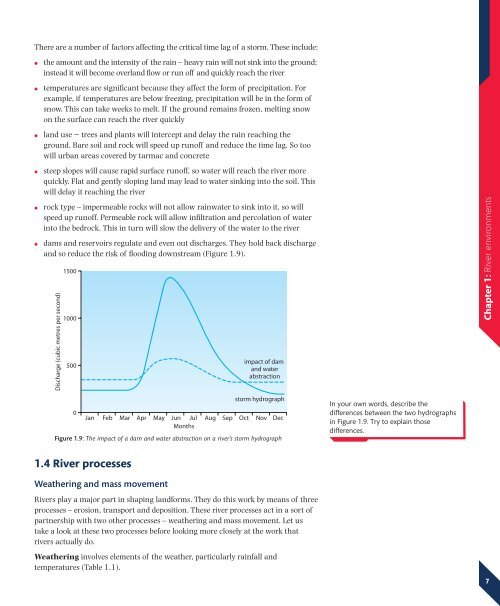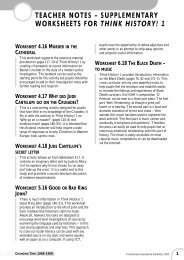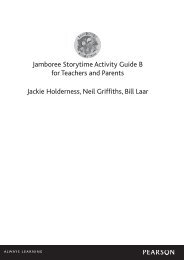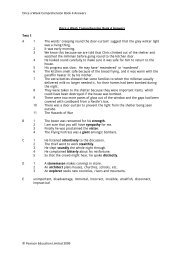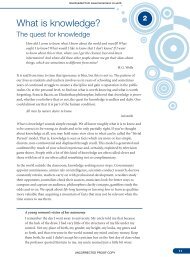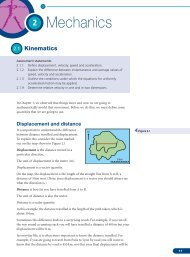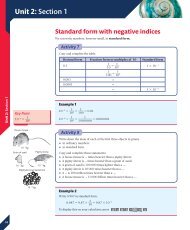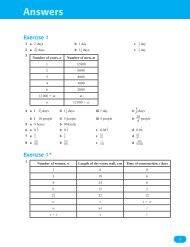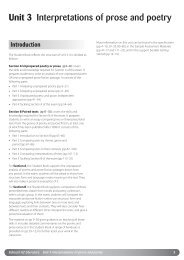Edexcel IGCSE Geography Chapter 1 - Pearson Schools
Edexcel IGCSE Geography Chapter 1 - Pearson Schools
Edexcel IGCSE Geography Chapter 1 - Pearson Schools
Create successful ePaper yourself
Turn your PDF publications into a flip-book with our unique Google optimized e-Paper software.
There are a number of factors affecting the critical time lag of a storm. These include:●●●the amount and the intensity of the rain – heavy rain will not sink into the ground;instead it will become overland flow or run off and quickly reach the rivertemperatures are significant because they affect the form of precipitation. Forexample, if temperatures are below freezing, precipitation will be in the form ofsnow. This can take weeks to melt. If the ground remains frozen, melting snowon the surface can reach the river quicklyland use − trees and plants will intercept and delay the rain reaching theground. Bare soil and rock will speed up runoff and reduce the time lag. So toowill urban areas covered by tarmac and concrete●●●steep slopes will cause rapid surface runoff, so water will reach the river morequickly. Flat and gently sloping land may lead to water sinking into the soil. Thiswill delay it reaching the riverrock type – impermeable rocks will not allow rainwater to sink into it, so willspeed up runoff. Permeable rock will allow infiltration and percolation of waterinto the bedrock. This in turn will slow the delivery of the water to the riverdams and reservoirs regulate and even out discharges. They hold back dischargeand so reduce the risk of flooding downstream (Figure 1.9).Discharge (cubic metres per second)15001000500impact of damand waterabstraction<strong>Chapter</strong> 1: River environmentsstorm hydrograph0Jan Feb Mar Apr May Jun Jul Aug Sep Oct Nov DecMonthsFigure 1.9: The impact of a dam and water abstraction on a river’s storm hydrographIn your own words, describe thedifferences between the two hydrographsin Figure 1.9. Try to explain thosedifferences.1.4 River processesWeathering and mass movementRivers play a major part in shaping landforms. They do this work by means of threeprocesses – erosion, transport and deposition. These river processes act in a sort ofpartnership with two other processes – weathering and mass movement. Let ustake a look at these two processes before looking more closely at the work thatrivers actually do.Weathering involves elements of the weather, particularly rainfall andtemperatures (Table 1.1).7


